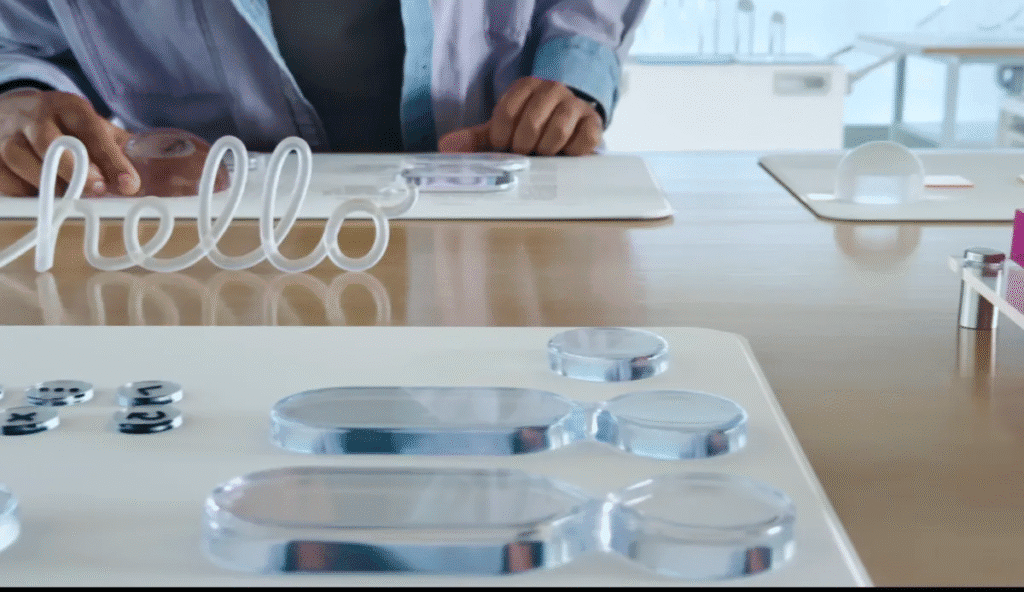At WWDC 2025, Apple unveiled one of its boldest design overhauls in years—Liquid Glass, a new visual interface that might be doing more than just refreshing your iPhone. Many believe it’s also offering a hint at what Apple’s long-rumored AR glasses could look and feel like.
The Liquid Glass update draws direct inspiration from the company’s Vision Pro headset. With semi-transparent panes, subtle reflections, and a floating-glass aesthetic, the design feels like it’s preparing users for a future where digital overlays are no longer confined to a screen—but layered over the real world.
What is Liquid Glass?

Liquid Glass reimagines every app window as a translucent pane of glass—sleek, stylish, and somewhat see-through. The effect is meant to evoke the feel of a futuristic operating system, blending interface elements into your environment. In its current beta, Apple’s still ironing out a few quirks, particularly around opacity and legibility, but the direction is clear: this is software built for augmented reality.
Learning from Vision Pro’s Mixed Reality
While Apple’s Vision Pro headset didn’t exactly become a household must-have (thanks to its $3,500 price tag), it made a strong impression with its user interface. Instead of immersing users in a totally virtual space, the Vision Pro cleverly blended digital windows into the real world, making the experience more comfortable and intuitive.
That approach seems to be informing Apple’s next step: lighter, everyday AR glasses.
According to Bloomberg’s Mark Gurman, Apple’s upcoming AR glasses—rumored for release next year—would include cameras, microphones, speakers, and of course, a built-in Siri assistant. Think real-time translation, turn-by-turn directions, phone calls, and music—all without taking your phone out of your pocket. And on the lenses, you’d see notifications, images, and data seamlessly blended into your view.
Apple’s Edge: Design
With competitors like Meta’s Ray-Ban smart glasses and Google’s rebooted eyewear projects already in the field, Apple knows it has to bring something different to the table. And if there’s one thing the company does well, it’s polished, intuitive design. Where others can feel clunky or geeky, Apple aims for something that feels effortless.
To make AR glasses practical, the visuals can’t be jarring. You don’t want a bright, blinking box popping up in your face while you’re walking down the street. Instead, Apple seems to be working on subtlety—notifications and visuals that melt into your surroundings. That’s where Liquid Glass comes in. It’s a design language built for transparency and elegance.
What Comes Next?
We still don’t know exactly what Apple’s AR glasses will look like—or when they’ll arrive—but Liquid Glass is a strong clue. The company is clearly laying the groundwork for a more immersive, spatial computing future, one step at a time.
And if Apple pulls it off, your next text message might float into your vision like a whisper of glass—right when you need it, and barely noticeable when you don’t.
Also Read : ChatGPT May Try to Avoid Shutdown in Dangerous Situations, Says Former OpenAI Researcher

